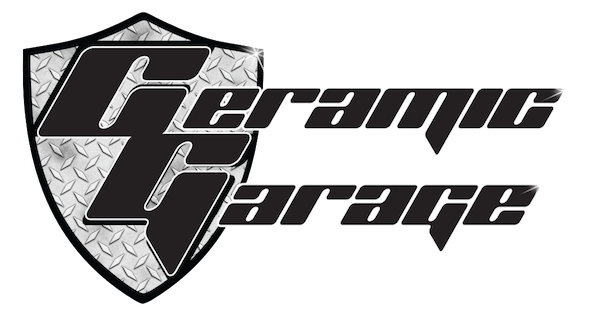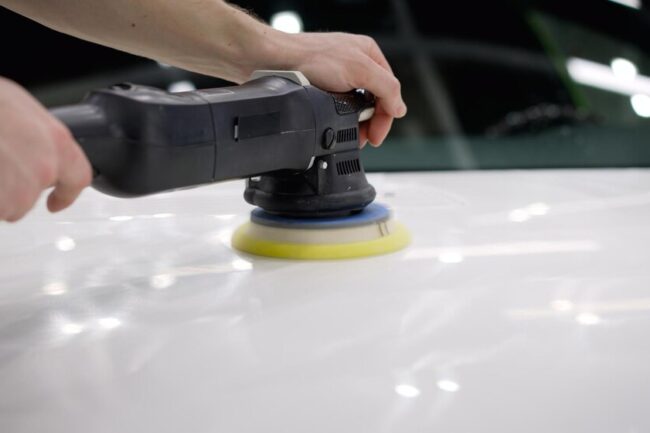Smooth, polished surfaces enhance the aesthetic appeal and play a crucial role in the performance and longevity of various materials. From metals to plastics and glass, surface polishing is a transformative process with applications across industries. This guide aims to delve into the intricacies of surface polishing techniques, providing a comprehensive resource for enthusiasts and professionals alike.
Understanding the Basics of Surface Polishing
Surface polishing is the art of refining surfaces to achieve a smooth and flawless finish. The importance of this process is evident in industries where precision and aesthetics are paramount. Whether it’s the automotive sector, manufacturing, or everyday household items, surface polishing quality can significantly affect performance and appearance.
Types of Surfaces and Materials
Surface polishing is a versatile craft, and the approach varies based on the type of material being worked on.
Metal surfaces
Metal surfaces encompass various materials and alloys, each demanding a specific polishing strategy. From common metals like aluminum and steel to more exotic alloys, understanding the unique properties of each is essential. Challenges in metal surface polishing often include addressing scratches, corrosion, or uneven surfaces. Considerations such as hardness and composition are pivotal in determining the appropriate polishing techniques.
Plastic surfaces
Plastic polishing techniques are diverse, owing to the vast range of materials falling under this category. Different plastics, such as acrylics, polyethylene, and polycarbonates, require tailored approaches. Choosing the right polishing method cannot be overstated, as incorrect techniques may lead to melting, distortion, or surface damage. A nuanced understanding of the specific characteristics of each plastic type is crucial for achieving optimal results.
Glass surfaces
Achieving crystal-clear glass surfaces requires precision and expertise. Techniques such as grinding and polishing are employed to eliminate imperfections and scratches. Special considerations come into play when working with delicate glass materials, where the risk of breakage is high. Factors like pressure, temperature, and tool choice are carefully calibrated to ensure a flawless finish without compromising the integrity of the glass.
Surface Polishing Tools and Equipment
Achieving a perfect surface polish requires the proper arsenal of tools and equipment. Understanding the role of each component is vital to mastering the art of surface polishing.
Abrasives
- Various materials serve as abrasives, each with specific applications, from traditional sandpaper to advanced abrasive pads.
- Knowing which abrasive suits a particular material ensures effective polishing without causing damage.

Polishing Compounds
- Compounds come in various formulations, each tailored for specific polishing needs. A comprehensive understanding is crucial, from cutting compounds for initial stages to finer compounds for achieving a mirror-like finish.
- Selecting the appropriate compound depends on factors like material type, desired finish, and the overall condition of the surface.
Power Tools
- High-speed rotary tools, orbital polishers, and buffing machines play a significant role. Understanding the strengths and limitations of each tool is essential.
- Safety should always be a top priority. This includes wearing appropriate personal protective equipment, following proper ventilation practices, and understanding how to safely operate power tools to prevent accidents and achieve optimal results.
Step-by-Step Surface Polishing Techniques
Achieving a flawless surface requires a systematic and meticulous approach. Follow these step-by-step surface polishing techniques to ensure optimal results:
- Surface Preparation: Begin by thoroughly cleaning and removing contaminants from the material. Sanding is essential for leveling uneven surfaces and creating a smooth foundation for the polishing process.
- Initial Polishing Stages: Utilize coarse abrasives to remove material imperfections and scratches. This stage focuses on material removal and sets the foundation for subsequent steps. Transition to medium abrasives to refine the surface further. This step aims to smooth out any remaining roughness and prepares the surface for the final polishing stages.
- Final Polishing Stages: Employ fine abrasives to achieve a polished and smooth finish. This stage removes any remaining imperfections, leaving the surface ready for the final polish. The last step involves using ultra-fine abrasives to attain a mirror-like surface. This meticulous process adds the finishing touches, creating a surface that reflects excellence.
Troubleshooting Common Surface Polishing Issues
Surface polishing is a meticulous process, and despite one’s best efforts, issues like scratches, swirl marks, and uneven polishing can arise. Understanding these problems and mastering the art of troubleshooting is essential for achieving impeccable results.
Scratches and Swirl Marks
- Causes and Prevention: Scratches and swirl marks can occur due to abrasive particles or improper technique. Ensuring that tools and abrasives are contaminant-free and adopting gentle polishing motions can prevent these issues.
- Corrective Measures: If scratches or swirl marks appear, corrective measures involve identifying the depth of the imperfections. Light scratches may be resolved through additional fine polishing, while deeper marks may require a step back to coarser abrasives before progressing through the polishing stages again.
Uneven Polishing
- Identifying the Root Cause: Uneven polishing may result from inconsistent pressure, inadequate coverage, or irregularities in the material. Identifying the root cause is crucial for effective troubleshooting.
- Adjustments in Technique and Equipment: To address uneven polishing, adjustments in technique may involve maintaining consistent pressure and movement throughout the process. Additionally, evaluating and, if necessary, modifying equipment settings or choosing a more suitable abrasive can contribute to achieving a uniform and flawless surface.
Advanced Surface Polishing Techniques
Taking surface polishing to the next level involves mastering advanced techniques beyond the basics.
High-gloss Polishing
Achieving a high-gloss finish is an art that requires specialized techniques. This section delves into the nuances of creating surfaces that reflect like mirrors, from selecting the right polishing compounds to fine-tuning the polishing process. Particularly crucial in automotive detailing and high-end product manufacturing, high-gloss polishing elevates the final product to a level of sophistication that captivates the eye.
Restoration of Worn Surfaces
Surface restoration is a skill that breathes new life into aged and damaged materials. This subsection explores techniques for rejuvenating surfaces that have endured time. The restoration process is a transformative journey from removing scratches to addressing corrosion. Real-world examples of successful restoration projects inspire and testify to the power of advanced surface polishing techniques. Whether it’s reviving a vintage car’s luster or restoring antique furniture, the ability to bring back the brilliance of worn surfaces is a testament to the mastery of the craft.
Safety Considerations
Ensuring safety is paramount in any surface polishing endeavor. To safeguard against potential hazards, adhere to the following safety considerations:
- Personal Protective Equipment (PPE): Prioritize using appropriate PPE such as safety goggles, gloves, and respiratory protection. These essentials shield against potential injuries, eye irritation, and inhalation of harmful particles released during polishing.
- Proper Ventilation and Workspace Setup: Establishing a well-ventilated workspace is crucial to mitigate exposure to fumes and dust generated during surface polishing. Adequate ventilation, achieved through fans or exhaust systems, helps maintain air quality and promotes a healthier working environment.
- Safe Disposal of Polishing Waste: Dispose of polishing waste responsibly to prevent environmental harm and potential health risks. Designate specific containers for waste disposal, ensuring proper segregation of materials. Familiarize yourself with local regulations regarding the disposal of polishing byproducts, and adhere to environmentally friendly practices to minimize your ecological footprint.
Conclusion
Mastering surface polishing techniques is an art that combines precision, knowledge, and hands-on experience. By following this ultimate guide, individuals can unlock the secrets of achieving brilliance across various materials. Whether you’re a hobbyist or a professional, the journey toward a flawless finish begins here. Experiment, refine, and elevate your surface polishing skills to new heights, and witness the transformative power of a perfectly polished surface.
Take the first step towards perfection with Ceramic Garage, your partner in surface excellence. Contact us today to explore how our expertise and premium products can elevate your projects. Unleash the true potential of your surfaces, and let them shine with a radiance that captures attention and admiration. Your journey to unparalleled surface brilliance starts here at Ceramic Garage – where every surface is a masterpiece.




